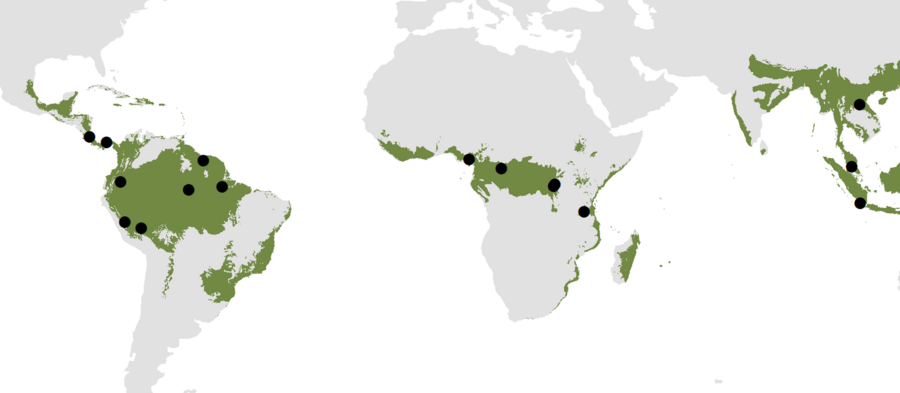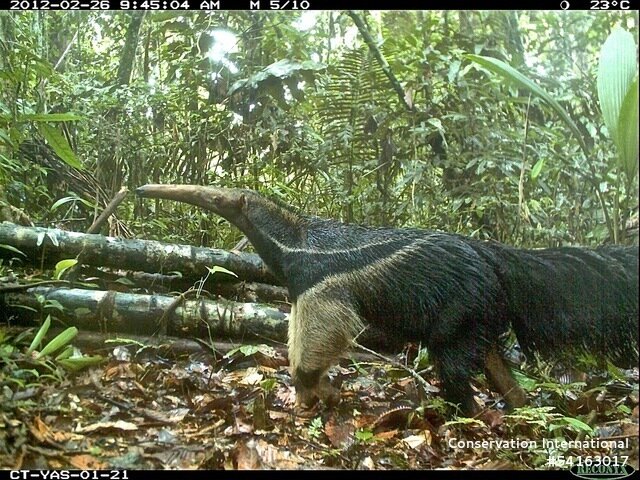In her PhD, Andrea Fernanda Vallejo Vargas has analysed millions of images of mammals in tropical forests, identifying several behavioural patterns across species, sites, and even continents.
Tropical forests are one of the most diverse habitats on the planet. Although they only cover approximately 10% of Earth's surface, they are home to over half of the world terrestrial mammal’s species.
Our understanding of animal behaviour, particularly their daily activity patterns, remains limited. “Gaining insight into these patterns is not merely a matter of academic interest but provides key information for effective conservation planning and biodiversity management, especially in the face of mounting environmental threats,” PhD candidate from the Norwegian University of Life Sciences (NMBU), Andrea Fernanda Vallejo-Vargas, says.

Analysed millions of images
Vallejo-Vargas studied the daily activity of tropical forest mammals across America, Africa and Southeast Asia through the lenses of camera-traps.
In her PhD thesis, she has identified and quantified the drivers governing the diel activity patterns of mammal communities in protected areas across pantropical forests.
She did this by analysing more than 2.3 million images from wildlife cameras collected by the TEAM Network. The Tropical Ecology Assessment and Monitoring (TEAM) Network was a pantropical program for monitoring long-term trends in tropical forests biodiversity. They utilise a standardised system of camera-trap data collection across a global network of field stations.

Vallejo-Vargas used camera-trap data collected from 17 protected areas across four biogeographic regions to provide a thorough exploration of the ecology of forest mammal communities.
“Research on diel activity of mammals has broad ecological implications because the time when a species is active mirror its ecological function in the ecosystem,” she says.
Activity peaks at sunrise and sunset
Across forests and continents, there were consistent peaks of activity.
“The hours around sunrise and sunset are when the animals are the most active, with herbivores representing a majority,” she says.
Mammals with similar characteristics showed similar activity patterns across the wet tropics. In other words, mammals with similar body size and position on the food web had similar activity across forests.

Avoiding heat, predators and moonlight
Another pattern was related to size: larger herbivores are more likely to display nocturnal activity than smaller ones.
“This is consistent with the hypothesis that nocturnal activity of large body size herbivores may be a strategy to avoid overheating,” Vallejo-Vargas explains.
Predators are also active at the same time as herbivores though many smaller prey (e.g., omnivores) appear to time their activity to avoid large predators. These results point out different bottom-up and top-down processes shaping the activity of tropical mammals.
A concrete example of this pattern can be seen with the ocelot and the agouti, a medium-sized wild cat and its rodent prey. Both found in three of the network sites.
“The agouti appeared to avoid predation by decreasing its activity in sites where the ocelot is present, especially during twilight when the predator is active.”
The results also indicate that 14 species prevalent in tropical forests avoids moonlight when they can. In contrast, only three species appeared to exploit the moonlit nights.
Important baseline
Vallejo-Vargas’ PhD provides essential ecological information on mammal communities that will interest many biologists, ecologists, and conservation ecologists. In addition, the consistent patterns provide a valuable baseline, which can be used to monitor change over time and contribute to comparative studies across forest disturbance gradients, habitats, or latitudes (e.g., related to global warming or an increase in human activities).
“We need to know more about how changes in in temperature or increases in artificial light that can potentially affect the activity of mammals.”
“The results from my thesis provide a vital baseline for future comparisons,” she concludes.
Andrea Fernanda Vallejo Vargas defends her PhD thesis "Activity patterns in tropical forest mammals: a pantropical assessment using camera-trap data" Friday 9 February, 2024.
Her PhD is part of the project “Empty Forests and Extinction Filters”, funded by The Research Council of Norway, project NFR301075.
Trial lecture and public defense are public and open to all.